Some people might argue, but there’s nothing better than time spent with family. It could be loud and sometimes even awkward but all these family gatherings around the table are fundamental to our upbringing. With one of the most colorful holidays approaching and the excitement for it, we, from Home of Wool, are giving you 3 tips on how to throw an amazing celebration for your loved ones, while also being kind to nature. Let the sustainable Easter preparations begin!
It’s Egg Time
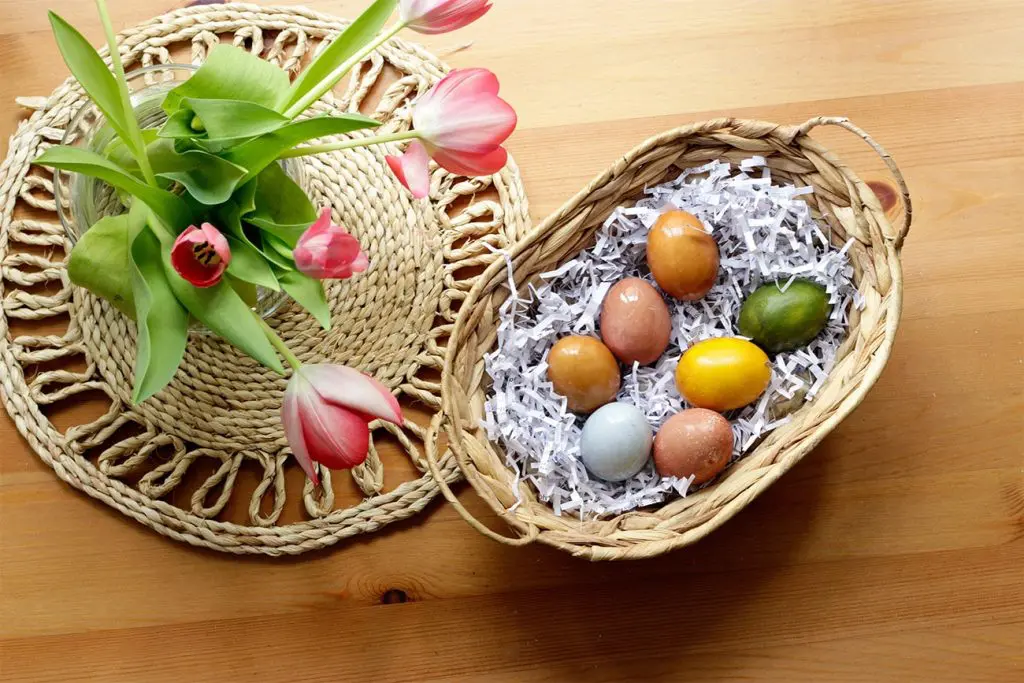
Easter without Eggs is like a “Home of Wool” mattress without it’s woolen filling – they are inseparable. Eggs in all colors and patterns become the “centerpiece” of each table and everyone is loving them. But the store-bought egg dyes might not always be the best solution. As much as their colors are looking bright and appealing, the pigments inside are usually artificially achieved. That makes some people wonder how safe actually are these colors for themselves or even for their kids.
Dying your eggs with natural ingredients is not only a great way to impress your guests but also could help with cleaning up your fridge from food leftovers – now that’s a good start for your sustainable Easter! In case you want to try a more organic approach to dying your eggs this year, here are a few naturally made colors that you can go with.
For the liquid you will need:
- Water (around 3 cups per color)
- White vinegar (2 tbsp per color)
For the colors you will need:
- Red: beets (4 cups, chopped)
- Orange: yellow onion peels (around 4 cups)
- Yellow: turmeric (3 tbsp)
- Blue: ½ head purple cabbage, chopped
*Green: dip the egg first for 30 minutes in Yellow and then in the Blue for another 20
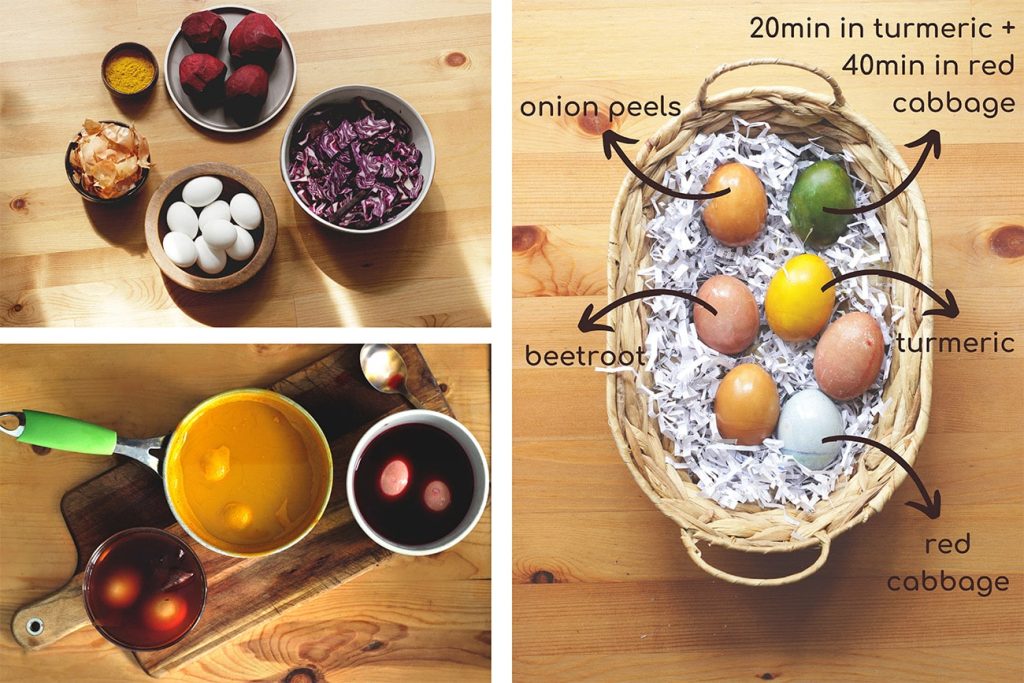
Preparation:
The way you make the colors is actually pretty simple. Bring to a boil each ingredient in a separate saucepan with around 3 cups of water, adding to it the 2 tbsp of vinegar. Keep in mind that the longer you simmer the mixture, the more intense the color would be. Once you have achieved the desired hue, just pour the liquid in a glass container or a bowl where it would be easy to fit a few eggs at the same time. Put the eggs while they are still hot in the dye and soak them for at least 30 minutes.
Some colors might need longer time and as an overall, the longer you keep the eggs in the dye – the darker the shade would be. Please remember that natural dyes do vary in terms of pigmentation. That’s why sometimes it might be necessary to soak the eggs longer than the amount of time suggested.
As you can see, we don’t have a concrete ingredient for the green. That’s why we are going to use the well-known color theory where green forms after mixing yellow and blue. Dip the egg first in the yellow dye for around half an hour and afterwards in the blue for as long as you want in order to achieve the desired green color. It’s important to remember to dip the egg in the yellow color first and afterwards in the blue since the yellow might get ruined if you do it the other way round.
Download the recipe here! ??
Getting Into the Easter Mood
Home decorations are always a good idea if you want to set the right mood for a celebration. Unfortunately, these days most decorations consist of items that are meant to be used only once and the majority gets thrown away pretty quickly. In order to avoid unnecessary waste, we have prepared a few ideas for some easy sustainable Easter decorations that you can make on your own or together with your young ones.
Easter ornaments are really underrated. There is a simple way of making homemade clay which is just perfect for Easter eggs pendants. All you will need is a couple of ingredients that everyone has in their kitchen pantry:
- Flour 1 cup
- Salt ½ cup
- Water ½ cup
- Thicker string or thread
Preparation:
Place the dry ingredients in a bowl and mix them well with a spoon or a whisker. Gradually start adding the water while mixing until dry, big lumps start to from. Knead it a bit with your hands until the consistency is no longer sticky. Now that you have your clay you can cut it into even pieces and start your crafting process. Keep in mind this homemade clay doesn’t require baking but a little bit of extra planning since it needs around 48h to dry completely.
After your clay creations are fully dry, you can continue with painting them. You can use any watercolor or acrylic paint you have at home, however, if you want the pendants to be even more in the sustainable Easter spirit, we recommend using the natural egg dye we told you about earlier. Want to try out this idea but for a different celebration? Get the recipe here! ??
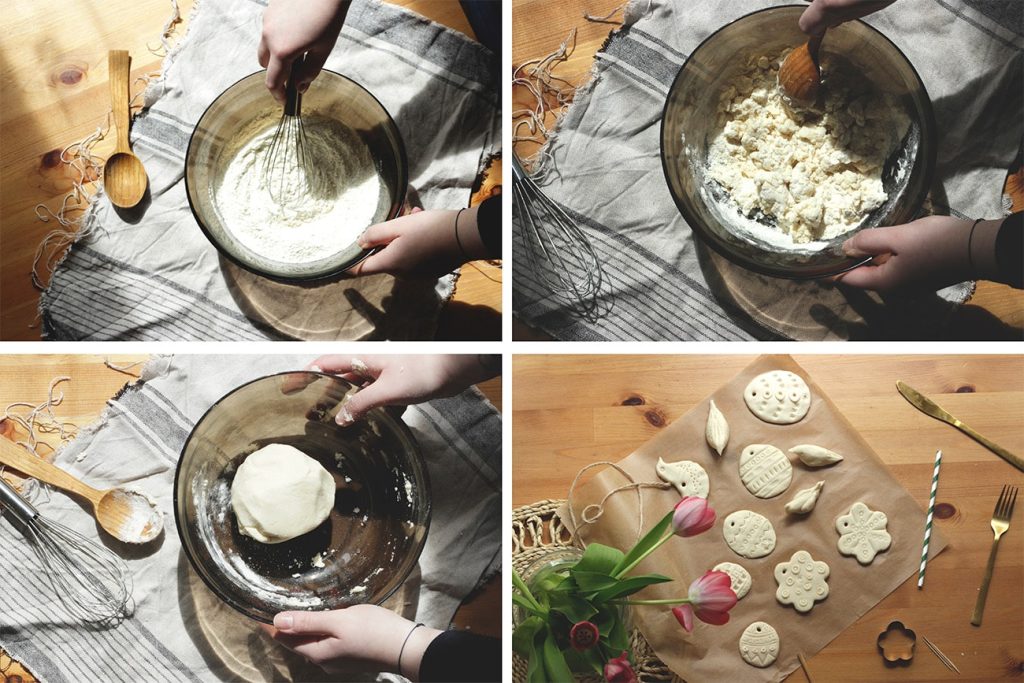
Searching for fake grass to fill your egg baskets? Look no further! If you have a couple of old magazines or newspapers laying around, you can easily create a DIY “grass” filling which can add a bit of an urban vibe to your table. This sustainable Easter trick can put some ease to your mind because you can reuse the filling as much as you want or if not – you can recycle it with other paper.
Simply fold a piece in a narrow zig-zag pattern and cut it on thin slices either with a pair of scissors or a Stanley knife (*if you are using the knife, don’t forget to place a cutting board underneath). Spread the cutouts with your hands so they can get some more volume and put the needed amount in a basket or a plate where your beautifully dyed eggs would go.

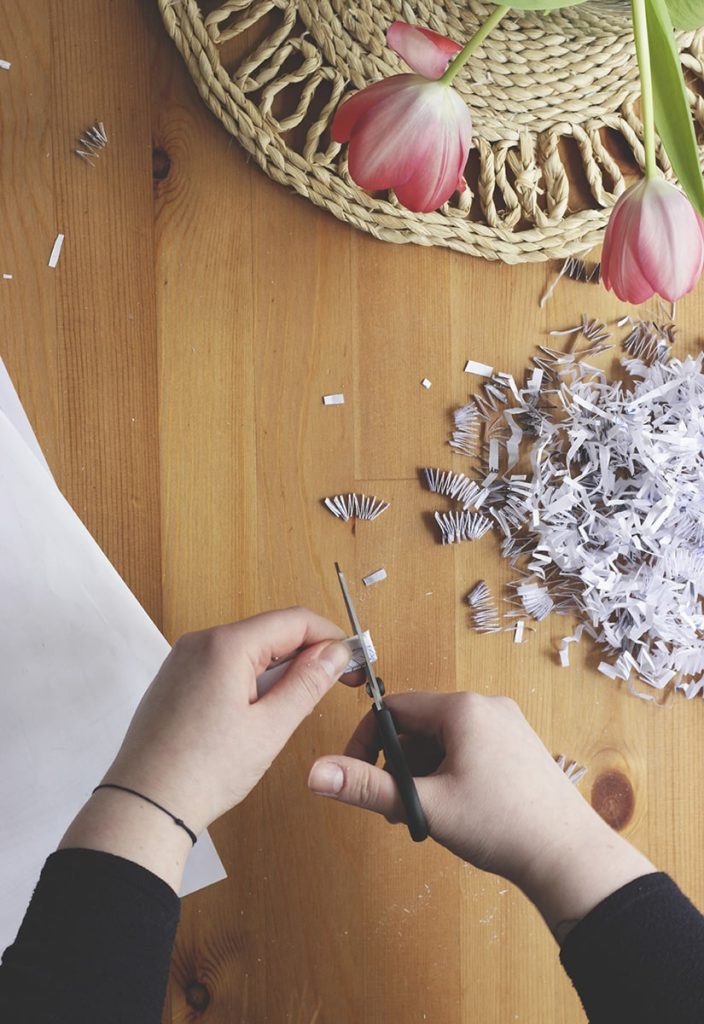
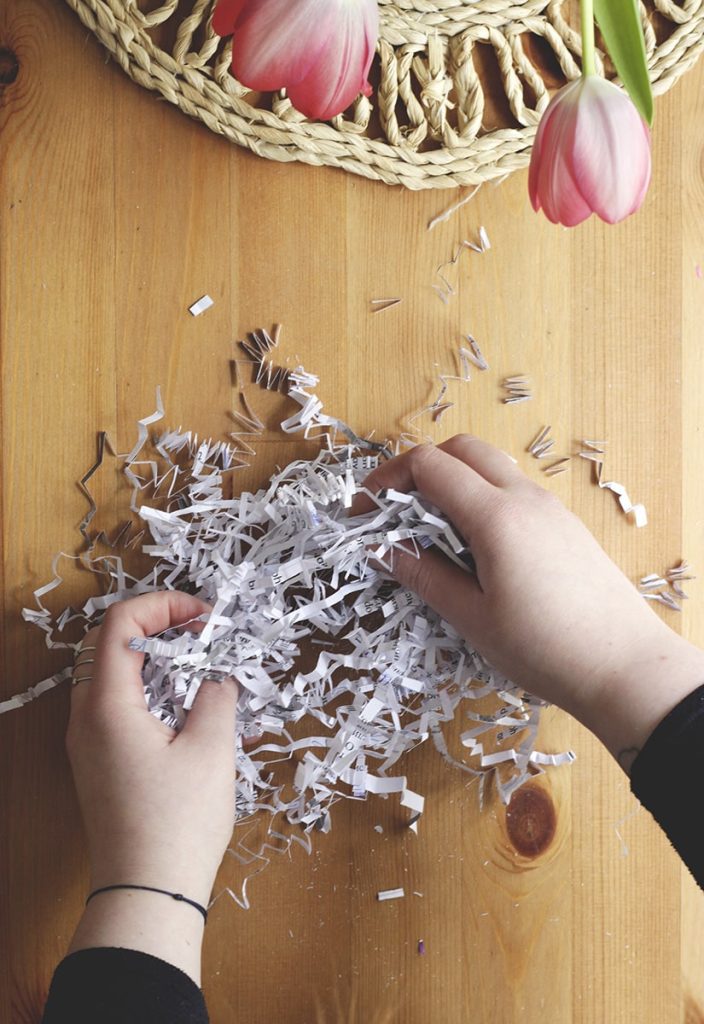
Fear No Leftovers
A great celebration comes with great…amount of food. Especially if you are planning a gathering for your whole family or a bunch of friends. Unfortunately, food leftovers seem to be always the case after celebrations of this type: 80 billion pounds of food are wasted every year in the U.S., and this is 30% to 40% of the country’s annual food supply. If this isn’t a reason enough to make the effort and try minimizing food waste, what is? Let’s see how we can make that truly sustainable Easter.
Food Boxes are a Lifesaver
If you feel like you went a bit too far and you prepared much more food than what could be eaten, get some recyclable paper containers and make personalized meal boxes for when the guests are leaving. Another option is to ask your guests to bring a lunch box themselves which can be filled with food after the meal.
Storing leftovers in an overly filled fridge brings the risk of forgetting about it – “out of sight, out of mind”, they say. Choose a clear glass container, rather than an opaque one, to ensure you eat it soon enough. Freezing meals or alternating them a bit afterwards can also be a way of figuring out the leftovers situation. Try mixing things up and you may end up with an even better idea for your next gathering.
An Easter Potluck is Always a Good Idea
If you don’t have the time to cook everything on your own – sharing the responsibility is also a great way of dealing with food waste. Discuss with your guests if everyone can bring something small they prepared at home. Like that you can turn the Easter meal into a potluck where your guests could enjoy a bit of everything and exchange some skills or recipes. If there is still too much food, just ask everyone at the end to handle it responsibly.
Throwing a sustainable Easter celebration is something we can definitely achieve. Challenging yourself by incorporating only natural elements to your meals or decorations is a nice way to turn conscious choices into a habit. These 3 tips can make your Easter gatherings even nicer while at the same time helping you being kinder to nature.
Home of Wool is wishing you great Easter holidays!

Leave a Reply